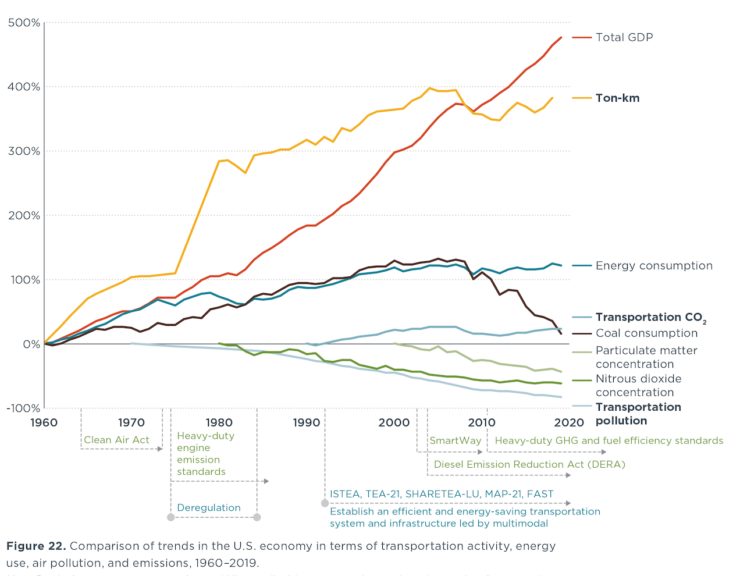Report
Toward greener and more sustainable freight systems: Comparing freight strategies in the United States and China
As China is developing environmental and transportation strategies for the next 5 years, this report compares the historical and current domestic freight systems of both the United States and China and considers some of the underlying macroeconomic and policy factors. The authors highlight how a framework implemented by the United States focused on creating an efficient freight system and on the expansion of intermodal freight, which is shipping with multiple modes.
In recent decades, both China and the United States saw trucking’s share of freight transportation grow the most, in tons and ton-km, and this came at the expense of rail and waterway. However, rail’s share of U.S. shipping increased along with the growth of intermodal thanks to a framework that promoted cross-jurisdictional collaborations in the transportation system. This restructured the U.S. freight system, reestablished market rates, provided more flexibility in choice of modes, and helped reduce emissions from the sector even amidst growing freight activity (see figure).

In China, demand for heavy, bulk products and high-value manufactured products drove the rapid growth of freight activity for all modes in recent decades. To achieve a greener, more sustainable transportation system, the report highlights the need for China to shift more toward a services-led economy and focus on both cleaner energy and continuing to tighten all related environmental policies. Additionally, a move toward an efficient freight transportation system should focus on intermodal and promoting the full potential of rail, waterway, and pipeline while investing in technological innovation and fundamental research.
